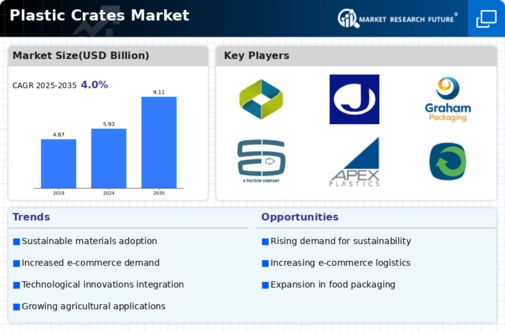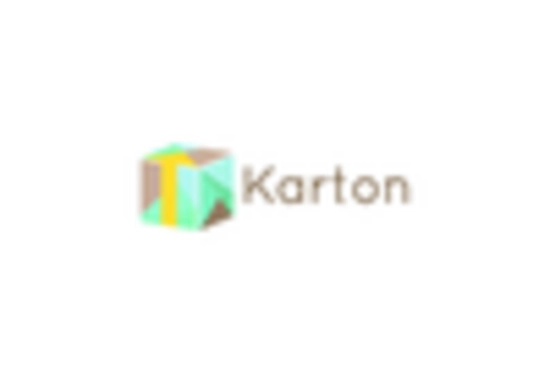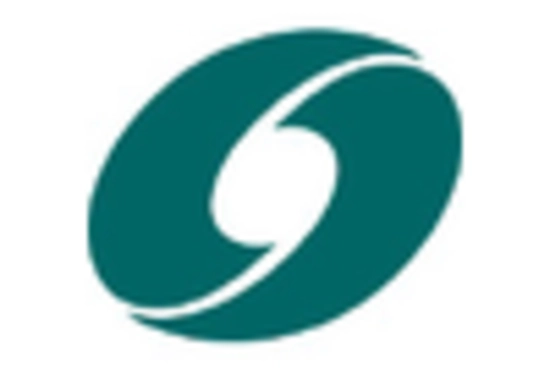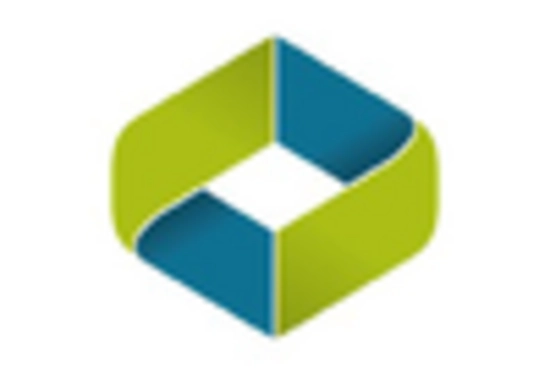Growth in the Food and Beverage Sector
The food and beverage sector is a major driver of the Plastic Crates Market. With the increasing need for efficient storage and transportation solutions, plastic crates are becoming essential for food safety and quality. The sector has witnessed a surge in demand for plastic crates, particularly for fruits, vegetables, and beverages, as they provide durability and hygiene. Market data indicates that the food and beverage industry is expected to expand, which will likely lead to a corresponding increase in the demand for plastic crates. This growth is indicative of the broader trends within the Plastic Crates Market, where the need for reliable and safe packaging solutions is paramount.
Expansion of E-commerce and Retail Sectors
The rapid expansion of e-commerce and retail sectors is significantly influencing the Plastic Crates Market. As online shopping continues to gain traction, the need for efficient logistics and packaging solutions becomes increasingly critical. Plastic crates offer a practical solution for the storage and transportation of goods, ensuring that products reach consumers in optimal condition. Recent statistics suggest that e-commerce sales are projected to grow, which will likely drive the demand for plastic crates as retailers seek to streamline their operations. This trend underscores the importance of plastic crates in the evolving landscape of the Plastic Crates Market.
Increased Focus on Supply Chain Efficiency
The growing emphasis on supply chain efficiency is a key driver of the Plastic Crates Market. Businesses are increasingly recognizing the importance of optimizing their supply chains to reduce costs and improve service levels. Plastic crates, with their stackable design and lightweight nature, facilitate better space utilization and handling during transportation. Market analysis indicates that companies are investing in solutions that enhance their supply chain operations, which includes the adoption of plastic crates. This focus on efficiency is likely to propel the growth of the Plastic Crates Market as organizations seek to streamline their logistics and distribution processes.
Technological Innovations in Manufacturing
Technological advancements in manufacturing processes are reshaping the Plastic Crates Market. Innovations such as automation and improved materials are enhancing the production efficiency and quality of plastic crates. These advancements not only reduce production costs but also allow for the creation of more durable and lightweight products. As manufacturers adopt these technologies, the market is likely to see an increase in the variety and functionality of plastic crates. This evolution in manufacturing is expected to attract new players to the Plastic Crates Market, further stimulating competition and growth.
Rising Demand for Sustainable Packaging Solutions
The increasing emphasis on sustainability is driving the Plastic Crates Market. As consumers and businesses alike become more environmentally conscious, the demand for sustainable packaging solutions is on the rise. Plastic crates, being reusable and recyclable, align well with these sustainability goals. According to recent data, the market for sustainable packaging is projected to grow significantly, with plastic crates playing a pivotal role in this transition. Companies are increasingly adopting plastic crates to reduce their carbon footprint and enhance their brand image. This trend is likely to continue, as regulations around plastic waste become stricter, further propelling the growth of the Plastic Crates Market.


















Leave a Comment